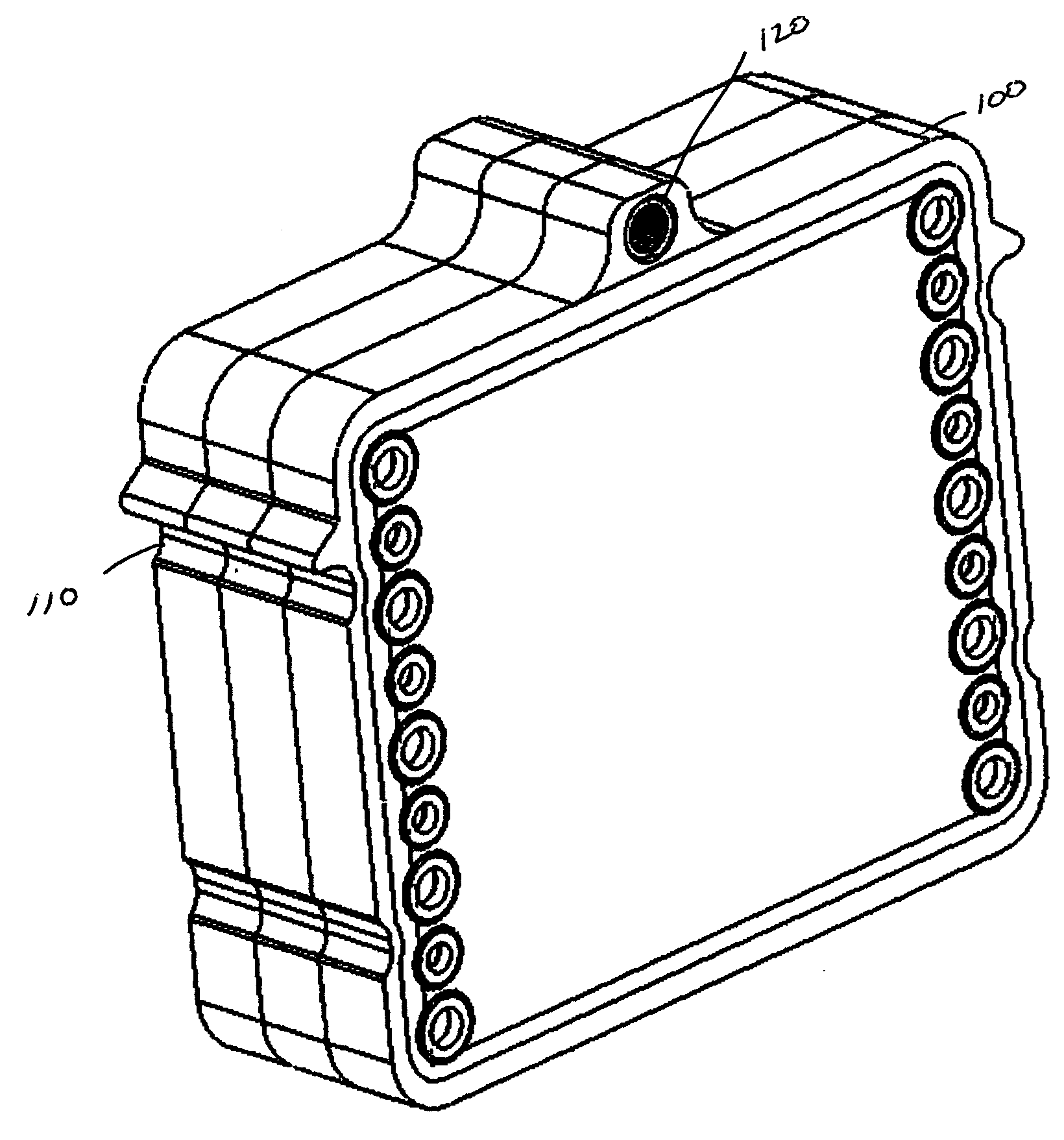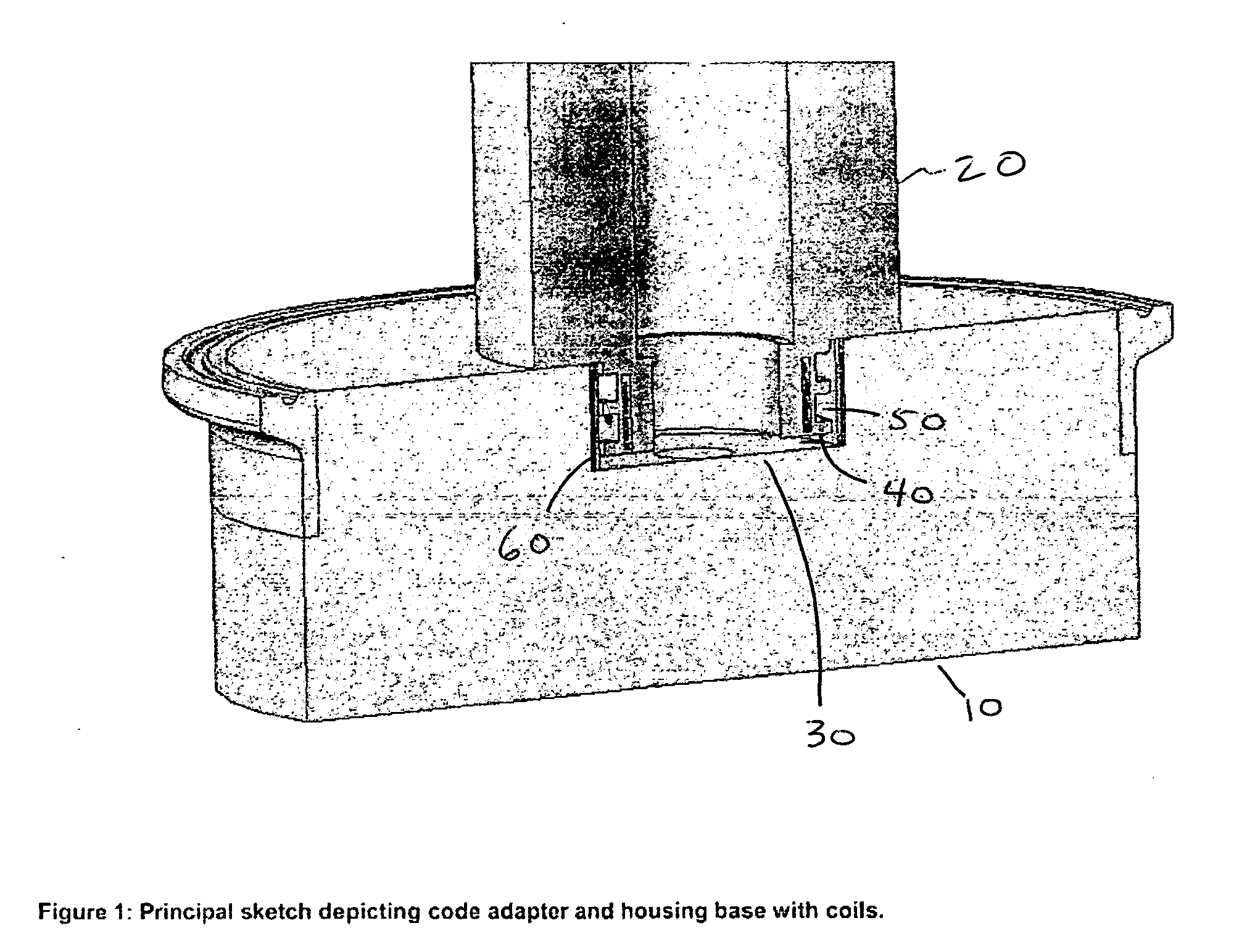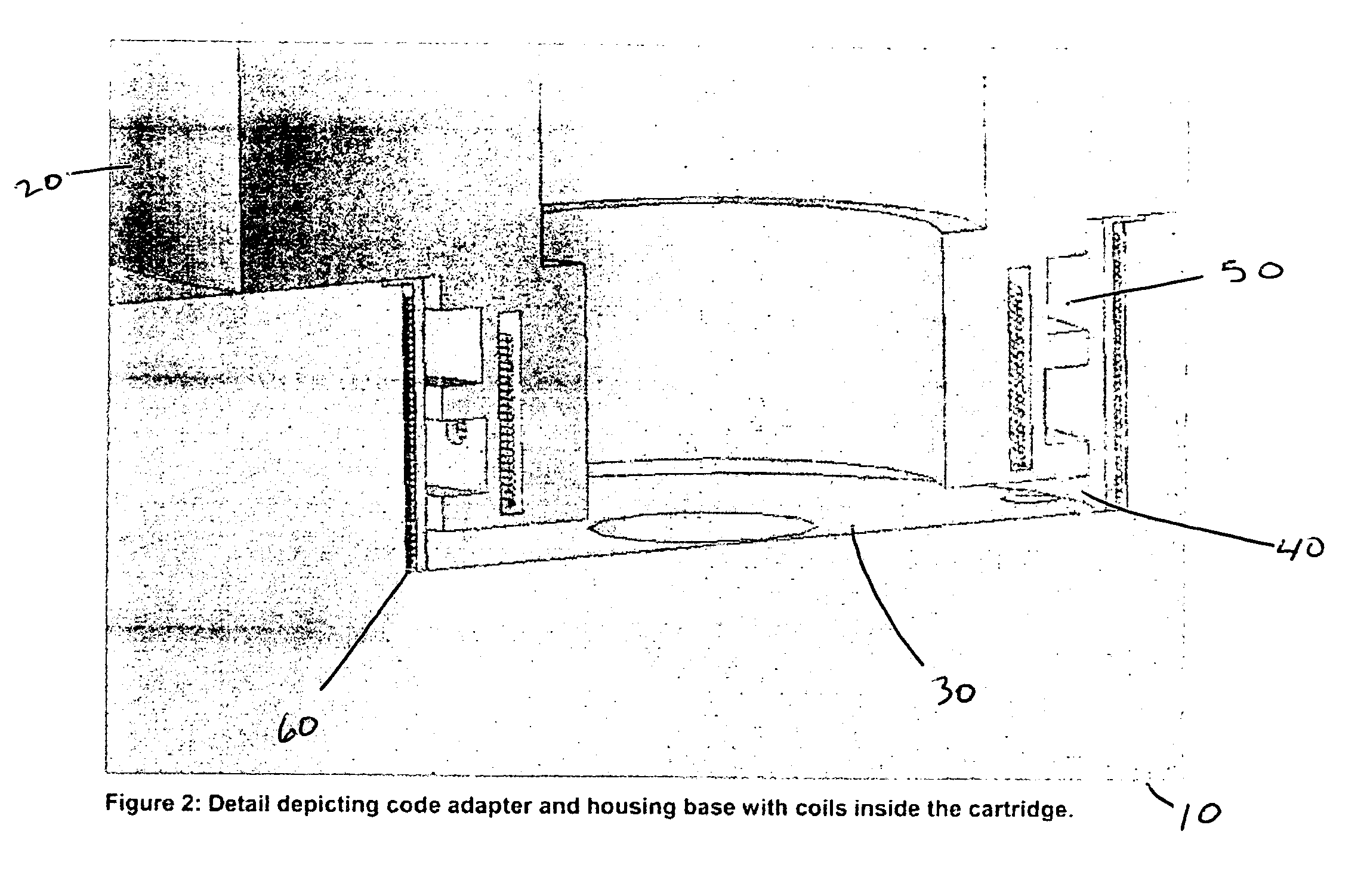Powered cartridges and other devices within housings
a technology of power supply and housing, which is applied in the direction of electrostatic separation, machines/engines, solid separation, etc., can solve the problems of inductive field interference and impracticality of wires inside the housing, and achieve the effect of reducing the risk of poor connection and increasing the useable life of the overall system
- Summary
- Abstract
- Description
- Claims
- Application Information
AI Technical Summary
Benefits of technology
Problems solved by technology
Method used
Image
Examples
Embodiment Construction
[0017]FIG. 1 illustrates a representative filter housing base 10 and an associated filter element 20. In the embodiment shown, the base and filter element are that of a device Cartridge Filter and Series 3000 Housing, commercially available from Millipore Corporation. The filter element has a membrane, through which materials are passed, and the corresponding structure or frame necessary to support this membrane. Surrounding this assembly is typically a housing dome, preferably constructed of stainless steel or some other non-corrosive material. Also, inlets and outlets are typically present, but have been omitted from FIG. 1 for clarity. Housing base 10 typically contains one or more matable portions, such as cavities 30, each adapted to mate with and hold a filter element. These cavities typically have one or more inlet and output ports in them, to allow fluid to pass through the filter element. Into this cavity 30, a filter element 20 is inserted. The filter element 20 preferably...
PUM
| Property | Measurement | Unit |
|---|---|---|
| electrical conductive | aaaaa | aaaaa |
| store energy | aaaaa | aaaaa |
| power | aaaaa | aaaaa |
Abstract
Description
Claims
Application Information
 Login to View More
Login to View More - R&D
- Intellectual Property
- Life Sciences
- Materials
- Tech Scout
- Unparalleled Data Quality
- Higher Quality Content
- 60% Fewer Hallucinations
Browse by: Latest US Patents, China's latest patents, Technical Efficacy Thesaurus, Application Domain, Technology Topic, Popular Technical Reports.
© 2025 PatSnap. All rights reserved.Legal|Privacy policy|Modern Slavery Act Transparency Statement|Sitemap|About US| Contact US: help@patsnap.com



